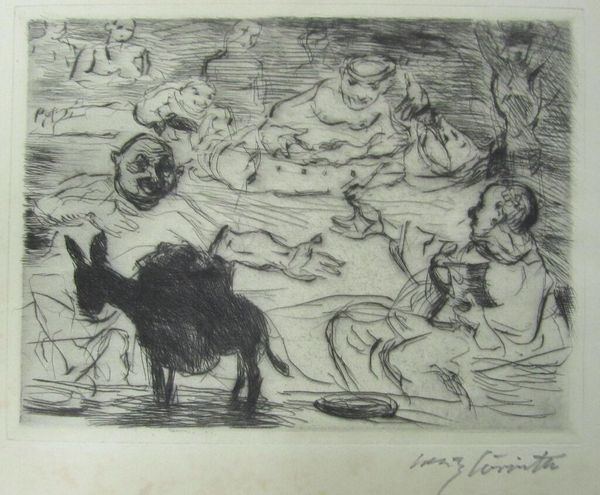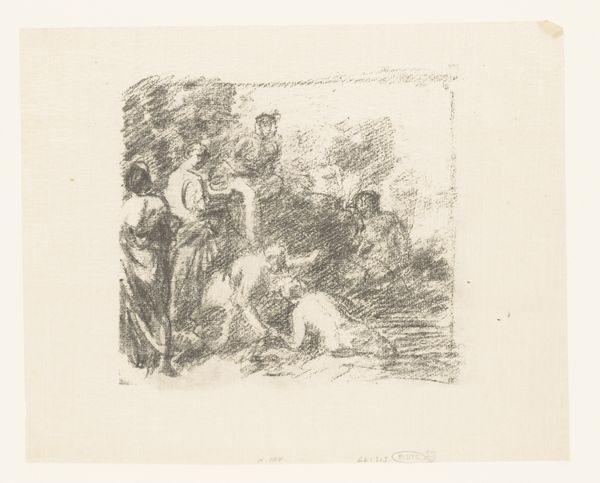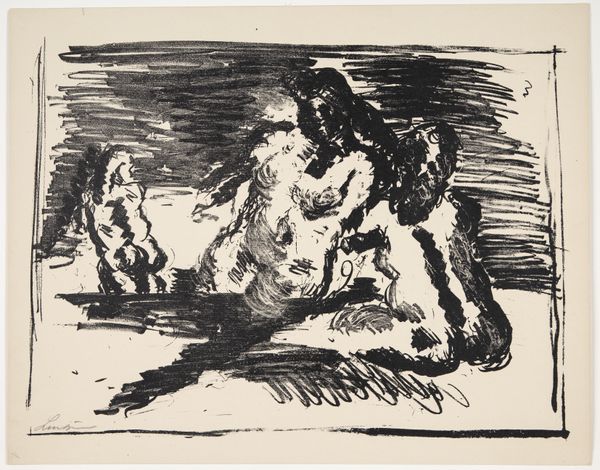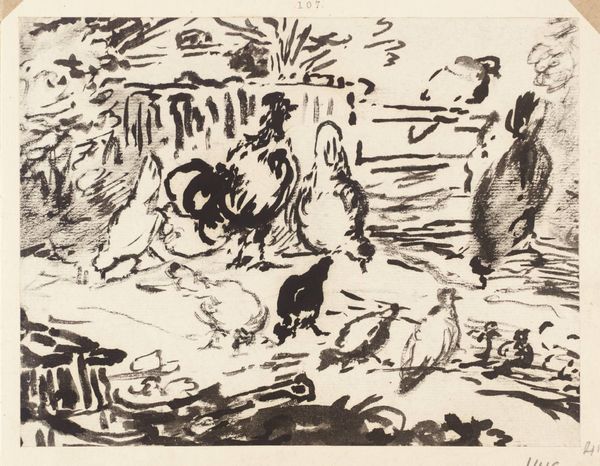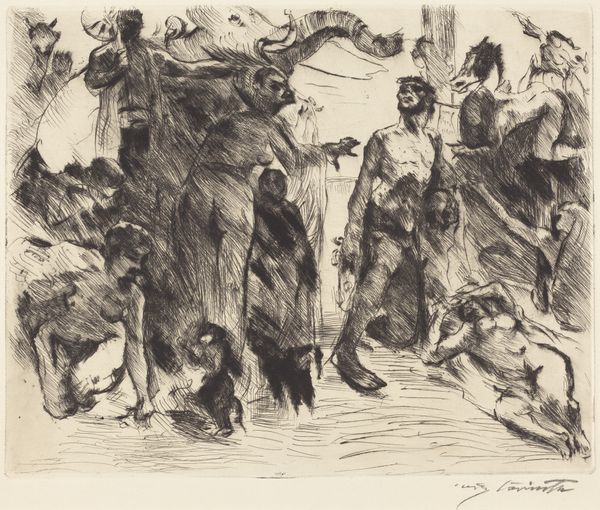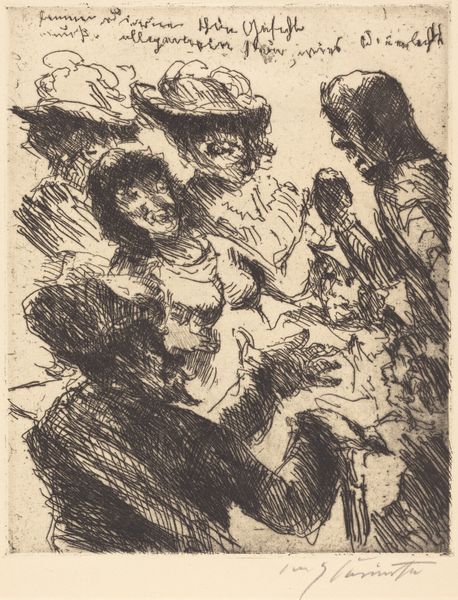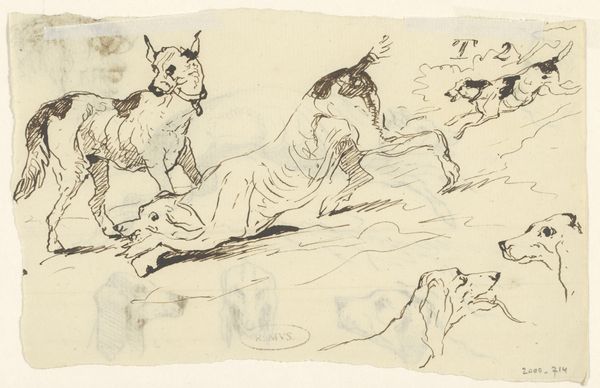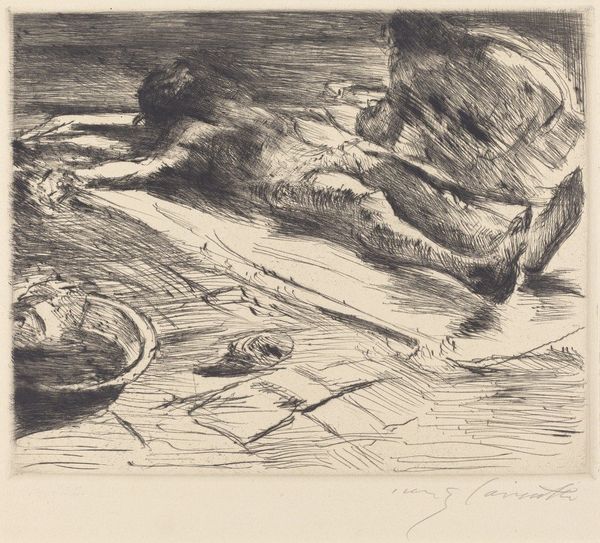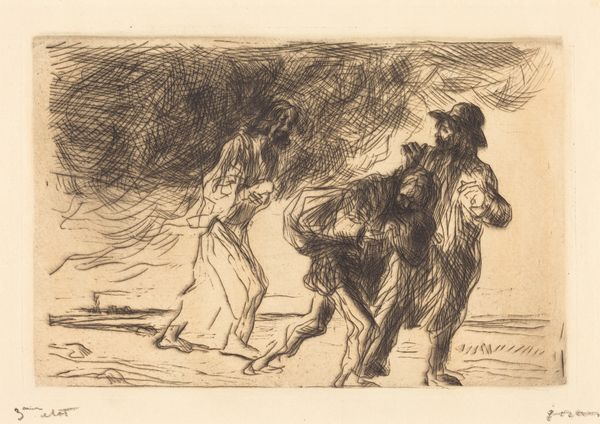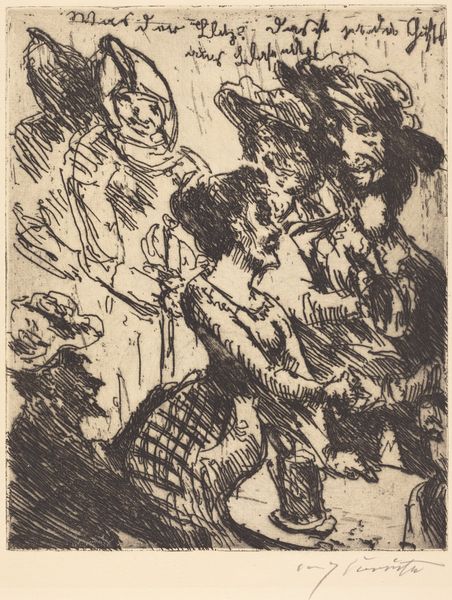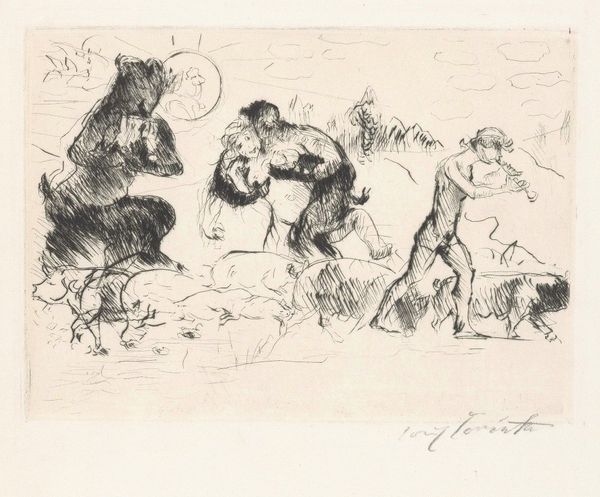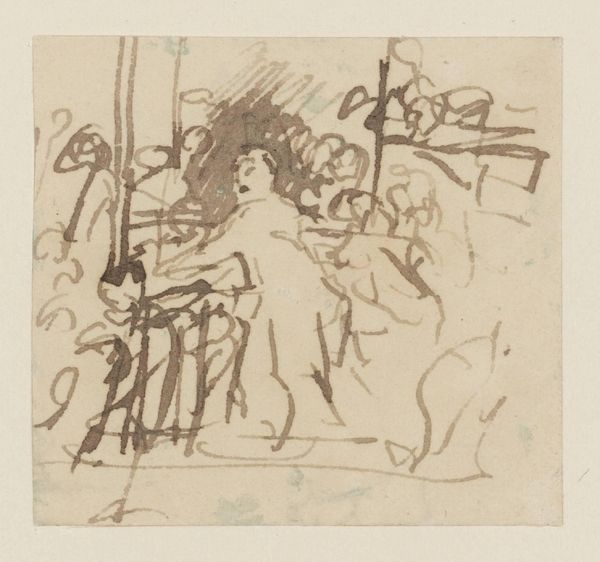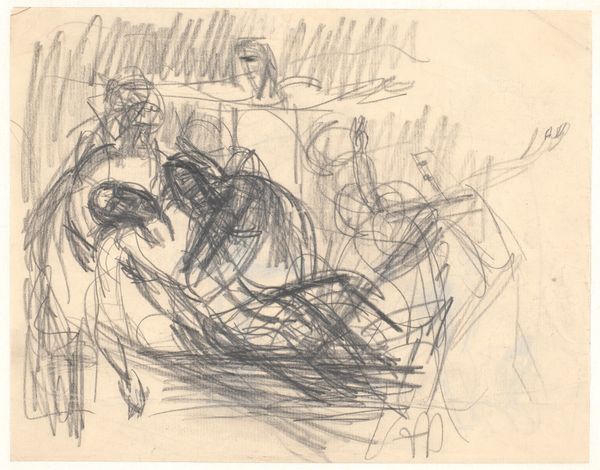
Das Gastmahl des Trimalchio: pl. V (The Banquet of Trimalchio: pl. V) 1919
0:00
0:00
print, etching, ink
#
ink drawing
#
narrative-art
# print
#
etching
#
german-expressionism
#
figuration
#
ink
Dimensions: plate: 12 x 15.8 cm (4 3/4 x 6 1/4 in.) sheet: 25.2 x 32.5 cm (9 15/16 x 12 13/16 in.)
Copyright: National Gallery of Art: CC0 1.0
Curator: Immediately, the etching feels frenetic, doesn’t it? The figures are rendered with such energetic, almost violent strokes. Editor: Indeed. What you're sensing comes from German Expressionism, and Corinth certainly embraced the style, especially later in his career. Let's introduce "The Banquet of Trimalchio: pl. V", an etching by Lovis Corinth created in 1919. It depicts a scene of revelry and overindulgence. Curator: The texture achieved solely with lines is remarkable. You can almost feel the roughness of the plate, the pressure applied during printing. This piece makes me consider the physical demands on the printmaker – the hours spent bent over a metal plate, manipulating the tools… Editor: It’s striking how Corinth employs line work here, but the image isn't simply about technique; it seems to be critiquing decadent social structures. It is set against the backdrop of post-World War I Germany when economic hardship fueled both extremes of wealth and poverty. Who gets a seat at this table and at what cost? Curator: The animal in the foreground, a dark and imposing donkey. The animal’s stark contrast hints toward Corinth using different etchants and acids to play with shadow. Editor: I see it as an intentional symbol – an emblem of stubbornness, maybe ignorance – positioned at the forefront of this debauched display. Considering the context of the time, it also raises a question about political accountability during a period of social crisis. The elite indulged themselves whilst everyday people experienced incredible loss. Curator: Absolutely, and you also bring up classism within industrial modes of labor. Printmaking was relatively accessible, making it available to more radical social and political organizations. So the consumption of prints itself could also be a political statement. Editor: I’m struck by the potential dialogue between form and context. Corinth uses those frantic lines not only to depict a scene of excess but perhaps also to mirror the social and political tensions simmering beneath the surface. Curator: Thinking about it, you might be onto something! Examining how this banquet print made its way to circulation tells a vital part of its story. It shifts our understanding about the conditions of possibility. Editor: Exactly. This piece is not just a banquet scene, but a reflection on the privileges and power at the moment when it was made. I encourage audiences to think more about what's concealed, the structures, the individuals who often get ignored by mainstream narratives.
Comments
No comments
Be the first to comment and join the conversation on the ultimate creative platform.

